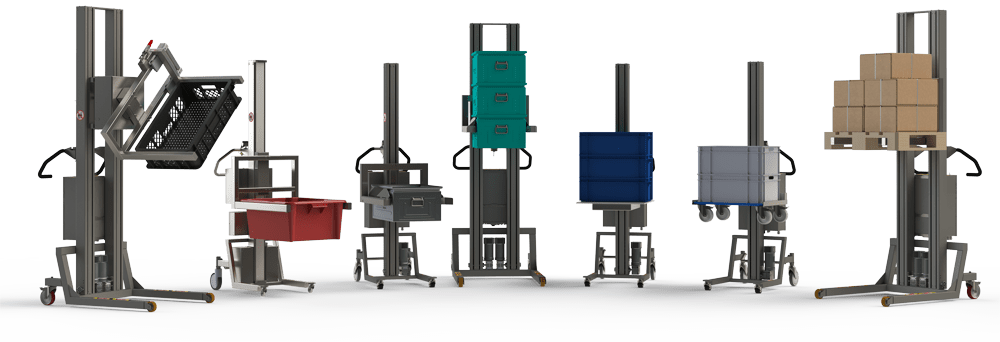
Jun 03, 2024

Transpire Insight coverage of the global handling and lifting equipment market has revealed that this industry is experiencing rapid growth and constant change. Today, equipment for material movement, lifting, and handling has become a crucial component of industrial activity across various sectors such as construction, shipping, logistics, and manufacturing.
The increasing demands for effectiveness, safety, and productivity are driving the need for handling and lifting equipment, which is gaining popularity due to the rise in industrial activities and infrastructure projects. Technological advancements and industry-specific requirements are propelling the steady development of this industry in different regions worldwide.
The demand for handling and lifting equipment is being fueled by economic development in different parts of the world, as well as the industrialization process in emerging economies. With the complexity and sophistication of industries and production lines on the rise, there is a growing need for reliable machinery capable of handling larger loads with precision.
Safety concerns are also a major driver for the installation of upgraded equipment to ensure compliance with health and safety standards and prevent injuries caused by manual handling.
Automation is emerging as a significant trend in the handling and lifting equipment market, enabling businesses to enhance efficiency and reduce operational costs. Automated systems minimize human intervention, reducing the risk of errors and improving speed and accuracy in completing tasks.
This trend is particularly advantageous in regions with high labor costs, where companies are striving to boost efficiency. Additionally, the industry is increasingly focusing on environmentally friendly solutions, with green handling and lifting equipment aimed at reducing emissions and energy usage. Sustainability has become a key competitive differentiator for companies in the Global Handling and Lifting Equipment market, aligning with global efforts to reduce carbon footprint.
Leasing options and the second-hand equipment market have emerged as viable solutions to address the challenges faced by businesses in need of handling and lifting equipment. The current trend favors leasing over purchasing, allowing businesses to access new technology without the burden of significant upfront costs.
Furthermore, the second-hand market offers affordable alternatives for businesses that may not have the financial capacity to invest in brand new equipment. This trend has created a more level playing field, enabling smaller businesses to compete effectively in their respective industries.
In addition to leasing and the second-hand market, after-sales services play a crucial role in the handling and lifting equipment industry. Manufacturers are now offering comprehensive service packages that encompass maintenance, repairs, and technical support.
These services are essential to ensuring uninterrupted business operations, as any equipment malfunction could lead to significant downtime and financial losses. The reliability of after-sales services is paramount to the availability of equipment and the smooth functioning of businesses that rely on handling and lifting equipment.
The Global Handling and Lifting Equipment market is forecasted to experience steady growth in the coming years, driven by factors such as industrialization and increased demand for efficient equipment. Despite challenges related to cost and accessibility, the market is continuously evolving to provide solutions that benefit businesses of all sizes.
The future of the market will be characterized by a focus on automation, sustainability, and innovation to meet the evolving needs of industries worldwide and propel the market forward.
Drop us an email at:
Call us on:
+91 7666513636